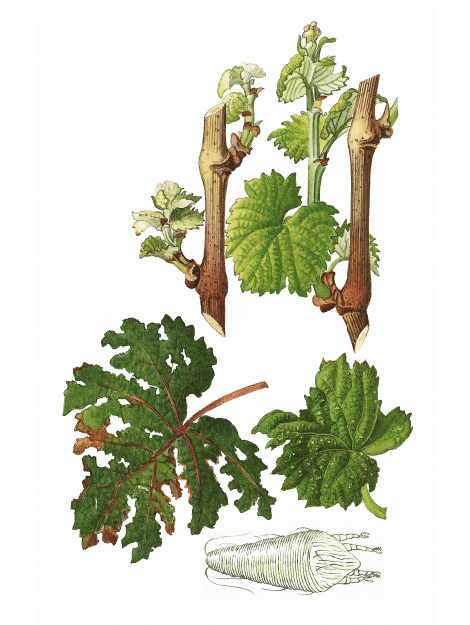Grapevine rust mite
Calepitrimerus vitis
Profile
The curl mite is a typical pest of the grapevine. Damage symptoms are caused by the sucking activity of the mites and can manifest themselves, among other things, as growth disorders and discoloration of the leaves. Especially in young plants, curly mites cause severe damage without sufficient space mite stocking.
Biology
The curly mite belongs to the gall mite family (Eriophyidae). The adult mites overwinter under the bud scales and under the bark of older wood. In spring, the winter animals migrate to the budding buds and the underside of young leaves, where they lay round eggs 0.03 mm in size.
The hatched larvae develop into nymphs and from them the summer females and males. These look very similar and differ only in body size. During the season, the active curl mites preferentially colonize the underside of leaves. However, in case of heavy infestation, they also occur on the upper side of the leaf, as well as on the tines and racemes. Several generations occur during the course of the year.
In late summer, the then emerging winter females seek out overwintering sites. The summer forms, on the other hand, fall off with the foliage and do not survive the winter.
Damage symptoms

In spring, the shoots sprout delayed and only puny. Shortened internodes, as well as compressed, broom-like growth are conspicuous as well as small, often spoon-shaped arched and curled leaves. Later in the year, the leaves tear and star-shaped, yellowish translucent stitches can be seen, which increasingly turn rusty brown.
Prevention and control
- To prevent a curly mite infestation, predatory mites should be encouraged and predatory mite-friendly plant protection products should be used.
- If necessary, a predatory mite colonization (e.g. Typhlodromus pyri) should be carried out. Apply felt strips with Typhlodromus pyri already in winter, so that they can become active at the first rising temperatures.
- Spraying for shoots: Early application on a warm day is very important for successful control of curl mites. The later the treatment, the lower the success will be (see list of plant protection products approved in Austria).
- Carry out cane washing with net sulfur from bud break.
Last updated: 07.09.2023
automatically translated